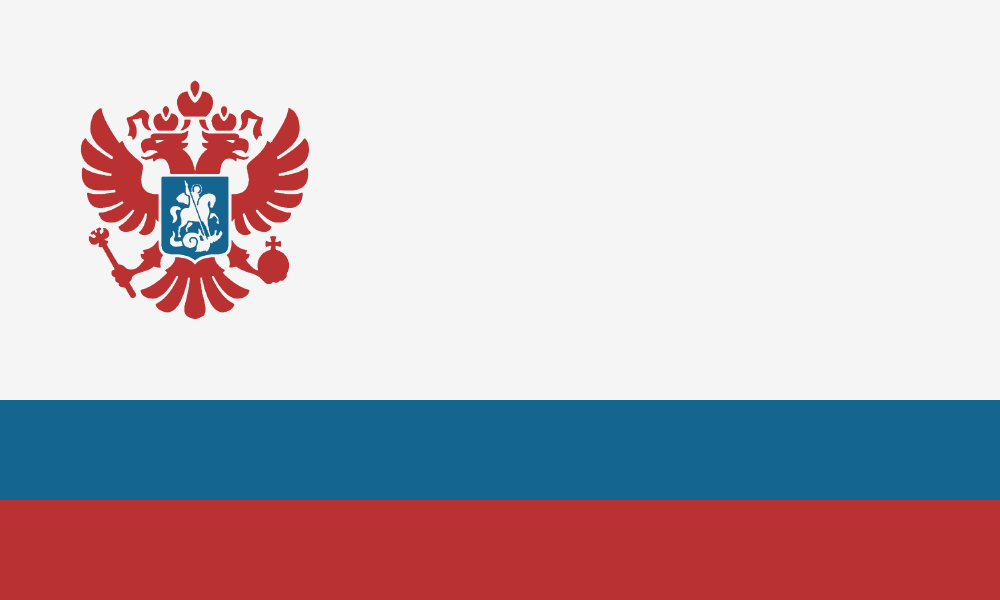| National Factbook |
| Flag: |

|
| Nation Name: |
Russian Federation |
| Leader Name: |
Angela Nathalie |
| Currency: |

Ruble |
| National Animal: |

Bear |
| History: |
After the collapse of the Soviet Union in 1991, Russia emerged as its main heir, plunged into a serious economic, social and political crisis. The then president tried to implement market reforms, but his government was marked by corruption, instability and the collapse of the population's quality of life. In 1993, the Constitutional Crisis exploded when Yeltsin dissolved parliament, which responded by trying to oust him. The confrontation culminated in tanks firing on the building of the Supreme Soviet - Russia's so-called “White House” - and the victory of the executive power. This episode marked the beginning of a veiled presidential authoritarianism.
In the vacuum of stability, Vladimir Vladimirovich Putin came to power in 1999, promising to restore order. His prolonged rule was marked by authoritarian centralization, repression of opponents, control of the media and reforms that eliminated the independence of institutions. The Russian armed forces, reorganized under his tutelage, began to operate with a hybrid doctrine and a focus on deterrent power, including nuclear modernization. Russia has also invested in influence operations and annexations, such as that of Crimea in 2014.
However, authoritarianism has met with resistance. Opponent Alexei Navalny, a symbol of urban and liberal youth, grew in influence by exposing the corruption of the ruling elite. Even imprisoned, poisoned and silenced for years, Navalny became a martyr and a fuse. In 2021, after a series of massive protests and defections within the state apparatus itself, a civil-military revolution broke out, leading to the fall of the Putin regime. Navalny led a brief democratic transition, but Russia was fractured.
Internal wounds, added to external tensions and miscalculations, culminated in a regional nuclear war involving other major nuclear powers. The destruction of cities, the collapse of logistics chains and nuclear winter led to the definitive collapse of the Russian Federation.
In the years that followed, the territory fragmented into militias, local governments and radioactive exclusion zones. It was in this chaotic context that Angela Nathalie, a young politician and former humanitarian commander based in Moscow, emerged. Charismatic, rational and determined, Nathalie united the civilian forces and the remnants of the Red Army under her leadership, forming the embryo of a new government.
With the end of the nuclear chaos and institutional reorganization, Angela Nathalie proclaimed the Refoundation of the Russian Federation, now based in Moscow and Natygrad in a symbolic ceremony in the ruined Kremlin. Under her leadership, the new federation has ecological reconstruction, cooperative federalism, military transparency and social justice as its pillars. The reformed armed corps - the Russian Federation Defense Forces (RFDF) - has a focus on civil protection, science, cyber-defense and international neutrality. |
| Geography |
| Continent: |
Asia |
| Land Area: |
1,609.34 sq. km |
| Terrain: |
After the nuclear war, vast regions of the former Russian Federation became uninhabitable or fell under the control of factions, militias and isolated autonomous zones. The new Russian Federation, under the presidency of Angela Nathalie, controls only the Moscow metropolitan region and some surrounding areas, forming a stable core surrounded by uncertainty. The territory under central control is a temperate forested plain, cut by rivers such as the Moscova and the Oka. Once densely urbanized, the region has undergone severe structural collapse, with abandoned neighbourhoods, impact craters and forested areas taking over the urban space.
The center of Moscow was partially protected by bomb systems and underground bunkers. Today, the Kremlin serves as the provisional seat of the new government, and neighborhoods like Arbat and Zamoskvorechye are home to communities rebuilt with the support of air purifiers and energy from solar panels. The city is surrounded by a fortified containment zone known as the Circle of Steel, guarded by the Moscow Guard and the FDFR. |
| Highest Peak: |
Poklonnaya Hill,
171 meters
|
| Lowest Valley: |
,
0 meters
|
| Climate: |
The climate in and around Moscow has changed significantly since the nuclear war. Once characterized by a humid continental climate, with harsh winters and short summers, the region now lives under the lasting effects of the so-called “moderate nuclear winter”, a consequence of the global environmental collapse. |
| People & Society |
| Population: |
391,560 people |
| Demonym: |
Russian |
| Demonym Plural: |
Russians |
| Ethnic Groups: |
Russians - 100.0% |
| Languages: |
Russian - 100.0%
English - 100.0% |
| Religions: |
- 0.0% |
| Health |
| Life Expectancy: |
80 years |
| Obesity: |
28% |
| Alcohol Users: |
74% |
| Tobacco Users: |
12% |
| Cannabis Users: |
0% |
| Hard Drug Users: |
1% |
| Economy |
| Description: |
The economy of the New Russian Federation, under the presidency of Angela Nathalie, follows a centralized but non-communist model, officially known as the Directed Transition Economy. This system was created with the aim of rebuilding the collapsed national infrastructure after the nuclear war and guaranteeing the dignified survival of the population in the midst of widespread chaos. The state exercises direct control over strategic sectors - such as water, energy, food, housing and defense - setting production, distribution and development targets through multi-year plans coordinated by the Federal Economic Commissariat.
At the same time, small and medium-sized companies operate under regulated concessions, with profit limits and strict supervision, promoting a form of private initiative under the tutelage of the state. The old oligarchic model has been dismantled, and the large corporations that survived the collapse have been nationalized or dissolved. The official currency is the new ruble (₽), not convertible internationally, but heavily backed by energy, metals and basic agricultural production, issued exclusively by the Bank for National Reconstruction. The civilian population is integrated into the economic effort through a system of productive and civic credits, which can be exchanged for housing, food, transportation and medical care, based on a direct contribution to reconstruction or the provision of essential services.
The national industry relies heavily on the reuse of war materials, the dismantling of abandoned structures and the adaptation of pre-collapse technology. There is a coordinated effort to develop self-sufficient energy generation systems, with a focus on clean sources such as solar and wind power, as well as the production of lithium batteries and water purification systems. This hybrid model - which rejects both neoliberal chaos and communist dogmatism - seeks to guarantee national autonomy, social justice and sustainable reconstruction in a deeply wounded world. |
| Average Yearly Income: |
$73.15 |
| Gross Domestic Product (GDP): |
$586,813,721.00 |
| GDP per Capita: |
$1,498.65 |
| Gross National Income (GNI): |
$489,449,305.00 |
| Industries: |
The industry of the New Russian Federation is, above all, a gear of survival. Focused on rebuilding essential structures, it revolves around the manufacture of basic inputs, emergency civil engineering and the production of purification, decontamination and energy generation technologies. Most of the factories operate in cooperation with the state, with plants adapted to work with scarce resources, the reuse of war scrap and semi-community work. Workshops and assembly centers in former industrial zones - such as Zelenograd and the outskirts of Tula - have been reactivated to produce everything from thermal clothing to light transport components.
Despite the surrounding desolate scenery, the sector that attracts the most attention is tourism - not for leisure, but for the symbolic and historical role it has taken on. Moscow, transformed into a bastion of reborn civilization, began to attract travellers, scholars and survivors from other parts of the former Russian territory and even from foreign enclaves, interested in getting to know the “city that resisted”. Tourism is tightly controlled and escorted, but there is a growing flow to sites such as the restored Kremlin, the monument to the Day of Reclaiming in Gorky Park and the Ostankino Tower, which has been partially rebuilt and turned into a memorial museum.
The capital is also home to the Corridor of Memory, a line of underground museums connected by armored tunnels, where documents, preserved ruins and videos of the fall of the previous regime, the civil revolution and the early days of radiation are displayed. Visiting Moscow has become, for many, a form of reverence for human endurance - and this mystique has turned tourism into one of the few industrial sectors with the potential for rapid growth, despite the hostile environment. Accommodation services, historian guides and cultural exchange centers are beginning to emerge as a symbolic industry, shaped not by consumption, but by memory and survival. |
| Military |
| History: |
The Armed Forces of the Russian Federation have a history marked by abrupt transformations, internal crises and dramatic rebirths. After the collapse of the Soviet Union in 1991, the military inherited the gigantic Soviet war apparatus - poorly funded, demoralized and scattered among republics that were now becoming independent. In the 1990s, during the years of economic instability and the constitutional crisis of 1993, the Armed Forces hesitated between their role as defenders of the state and tools of coercion. The violent repression of parliament on Boris Yeltsin's orders left deep scars on the corps.
With Vladimir Vladimirovich Putin's rise to power, the military apparatus was gradually centralized and restructured under strict political control. Under the pretext of restoring national prestige, Putin invested heavily in modernizing the Armed Forces, especially strengthening the intelligence services (FSB, GRU) and elite units such as the Spetsnaz. However, this strengthening has been accompanied by a hardening of authoritarianism: loyalty to the president has become more important than to the constitution. The military structure became one of the main pillars of the regime, taking part in external conflicts and internal repression.
The final collapse began with the civic uprising led by Alexei Navalny in 2021, which quickly turned into a popular uprising. Fragments of the armed forces - especially young and derelict units in the middle ranks - refused to open fire on civilians and began to support the insurgents. Faced with political and social implosion, the country plunged into anarchy, and the nuclear war that followed reduced most of the major military formations to ashes.
It was in the ruins of Moscow that the first nuclei of today's federal armed forces resurfaced. Under the command of then-civilian commander Angela Nathalie and veterans loyal to the new order, what is now called the Russian Federation Defense Force (RDF) was founded. Without mass tanks or ballistic missiles, it was born out of scarcity, discipline and the will to protect the last survivors. Made up of territorial battalions, military engineers, decontamination units and urban patrol groups, the FDFR replaced the old concept of a “projection army” with a doctrine of local resistance and armed reconstruction.
Today, the Armed Forces of the New Federation are not an instrument of conquest, but the shield of national reconstruction - protecting logistical routes, defending decontaminated zones and ensuring that the mistake of putting the war machine before human life is never repeated. |
| Soldiers: |
0 |
| Tanks: |
0 |
| Aircraft: |
0 |
| Ships: |
0 |
| Missiles: |
0 |
| Nuclear Weapons: |
0 |
| Last Updated: 05/10/2025 12:12 pm |













